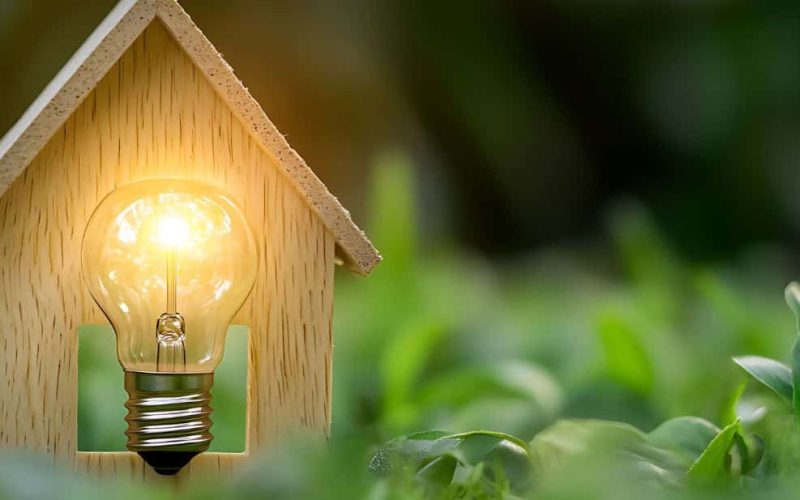With rising energy bills and increasing awareness of our environmental impact, many homeowners are looking for practical ways to reduce energy consumption at home. Not only can energy-saving measures help lower your bills, but they also contribute to a more sustainable future.
Here are seven top energy-saving tips to help you cut down on energy usage and save money.
1. Upgrade to Energy-Efficient Appliances
One of the most effective ways to reduce energy consumption is to upgrade to energy-efficient appliances. Look for the Energy Star label or A+++ ratings when purchasing new devices such as refrigerators, washing machines, and ovens. These appliances use significantly less energy compared to older models, helping you lower your energy costs over time.
Tip: Even if an appliance seems to be working fine, replacing it with a more efficient model could lead to substantial savings in the long run.
2. Insulate Your Home
Proper insulation is key to maintaining a comfortable temperature in your home without over-relying on heating and cooling systems. Insulating your walls, roof, and floors can prevent heat from escaping in the winter and keep your home cooler in the summer. This reduces the need for constant heating or air conditioning, resulting in lower energy costs.
Tip: Don’t forget to insulate your loft and consider double or triple glazing your windows for maximum efficiency.
3. Install a Smart Thermostat
A smart thermostat allows you to control your heating and cooling systems more effectively. You can program it to lower the temperature when you’re not home and heat your home just before you return, ensuring you never waste energy. Many smart thermostats also provide insights into your energy usage, helping you identify further savings.
Tip: Some smart thermostats can be controlled remotely via your smartphone, giving you full control over your home’s temperature, even when you’re away.
4. Switch to LED Lighting
Replacing traditional incandescent bulbs with LED lights is a simple yet effective way to reduce energy consumption. LED bulbs use up to 80% less energy and last significantly longer, making them a cost-effective choice for lighting your home.
Tip: Consider installing motion sensors or timers in areas where lights are often left on, such as hallways or outdoor spaces.
5. Seal Drafts and Leaks
Drafts around windows, doors, and other openings can let cold air in and warm air out, making your heating system work harder. Sealing these drafts with weatherstripping, caulking, or draft excluders can significantly improve your home’s energy efficiency.
Tip: Don’t forget to check for drafts around pipes, chimneys, and attic hatches, as these are common areas where heat can escape.
6. Use Appliances Efficiently
How you use your appliances can also have a big impact on your energy bills. For example, washing clothes at 30 degrees instead of 40, only running the dishwasher with a full load, and air-drying clothes instead of using a tumble dryer can all reduce energy consumption.
Tip: Unplug devices when not in use, as many continue to draw power even when turned off. Consider using a power strip with a switch to easily disconnect multiple devices at once.
7. Consider Renewable Energy Sources
If you’re looking to make a long-term investment in energy savings, consider installing renewable energy sources like solar panels or a heat pump. While the upfront costs can be high, these systems can dramatically reduce or even eliminate your reliance on grid electricity, leading to substantial savings over time.
Tip: Investigate whether you’re eligible for government incentives or grants to help offset the initial cost of installing renewable energy systems.
Discover an Energy Efficiency Loan Option for Your Home
Implementing these energy-saving tips could lead to significant reductions in your energy consumption and potentially lower energy costs. However, some upgrades, such as insulation or renewable energy installations, may require an upfront investment.
Lendology offer a range of low-interest loans designed to support energy-efficient home improvements, making it easier for you to create a more sustainable and cost-effective living environment.
Discover if you are eligible for an Energy Efficiency loan from Lendology – Council funded loan options in your area
We recommend that you carry out an independent retrofit assessment to find out which works are suitable for your home and budget.
Representative Example (4% fixed interest rate, Representative 4.2% APR).
Loans are subject to status and are typically protected by a Title Restriction. Borrow £5,000 over 60 months, £92.08 monthly repayments. Total amount repayable = £5,544.96, including £20 fee for registering the Title Restriction against your property at the Land Registry. The £20.00 fee is only payable if a loan is agreed by Lendology and you decide to proceed with a loan. We do not charge interest on the fee. A Title Restriction means that you may not be able to sell your home without our permission unless the loan is fully repaid. Missing payments could affect your credit rating and ability to obtain credit in the future.
Loans are subject to status and are typically protected by a Title Restriction. This is a financial promotion approved by Lendology CIC. Missing payments could affect your credit rating and ability to obtain credit in the future.


